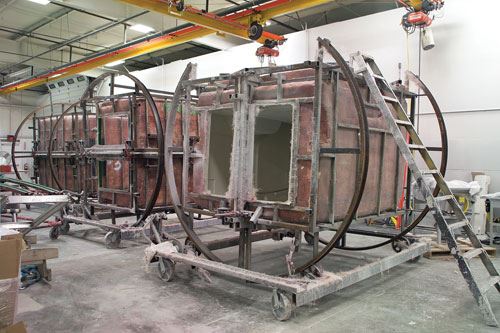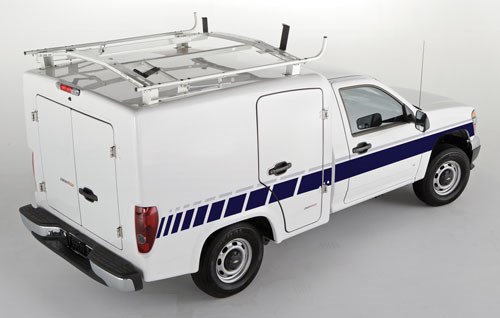One-piece molded truck body uses customized resin formulation
When General Motors Corp. (Flint, Mich. ) opted to update its small Astro cargo van in 2007 concurrent with the introduction of new Colorado and Canyon light truck platforms, customers talked and GM listened.
When General Motors Corp. (Flint, Mich.) opted to update its small Astro cargo van in 2007 concurrent with the introduction of new Colorado and Canyon light truck platforms, customers talked and GM listened. Based on user input, its Astro Body service truck was redesigned in collaboration with partner Supreme Corp. (Goshen, Ind.), a manufacturer of specialty truck bodies, buses, armored vehicles and motor homes. The lightweight, all-composite truck body is more fuel efficient and tailorable to myriad functions, says Tim Cavanaugh, GM’s marketing product manager for Astro Body.
Two manufacturing processes are used to make the cargo shell. First, the floor is laminated by Supreme’s subsidiary company Tower Structural Laminating, located adjacent to Supreme’s Astro Body plant in Ligonier, Ind. Plywood sheets are fed downward through a vertical, heated, high-compression laminating press, where they receive glass/polyester facings made with chopped glass and woven roving wet out with AOC LLC’s (Collierville, Tenn.) Altek unsaturated polyester resin, which AOC says can be tailored to the viscosity, gel and cure requirements of each customer’s process. Supreme’s Ligonier plant manager, Paul Sabelhaus, says, “The resin gives us very good fiber wetout and strong adhesion to core materials.” On one side of the composite laminate sheet, gel coat from Valspar Composites (Elkhart, Ind.) is applied to weatherproof the cargo shell underside. The finished sheets are cut to exact dimension and transferred to the Supreme molding facility next door.
There, the cargo shell is made in one piece in an open molding process. Using a two-piece, rotatable mold (see top photo, at right), workers first place the finished floor panel laminate in the bottom of the mold then apply white gel coat and a short fiber-reinforced skin coat over the entire inner mold surface. The structural laminate is then applied using chopped fiber sprayup with Altek resin. Woven glass roving from Hexcel (Dublin. Calif.) and urethane foam core are incorporated in a few locations for added stiffness and strength. The cargo doors are fabricated separately and attached to the body, after the shell cures, together with bonded aluminum attachment hardware for bins, shelves, ladder rack and other options.
Related Content
-
Braskem demonstrates PP solutions using Weav3D composite lattice technology
Partnership combines Braskem’s polypropylene sheets with Weav3D Rebar for Plastics technology to address new structural, automotive applications requiring high-strength, lightweight material solutions.
-
Composite resins price change report
CW’s running summary of resin price change announcements from major material suppliers that serve the composites manufacturing industry.
-
Highly tunable, woven lattice reinforcements target automotive structures
CAMX 2023: Startup Weav3D will be demonstrating its two collaborative automotive demonstrator parts and present two conference papers.
















